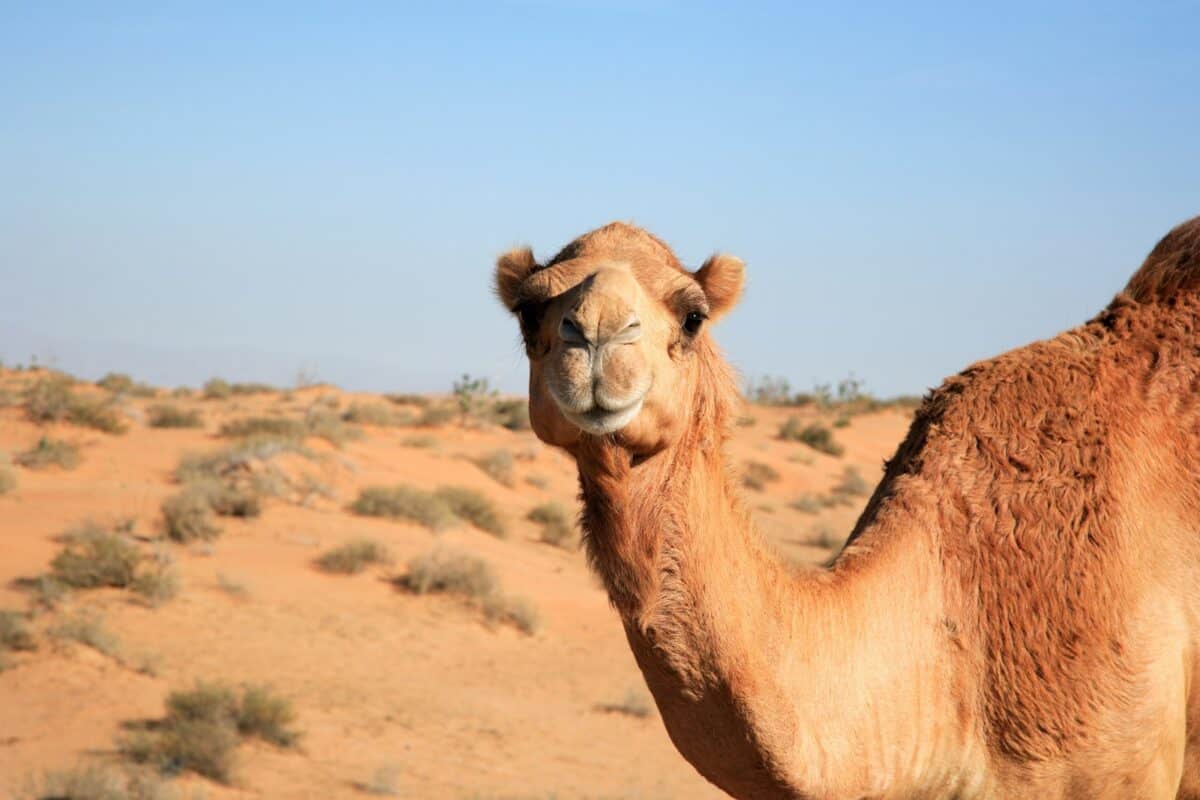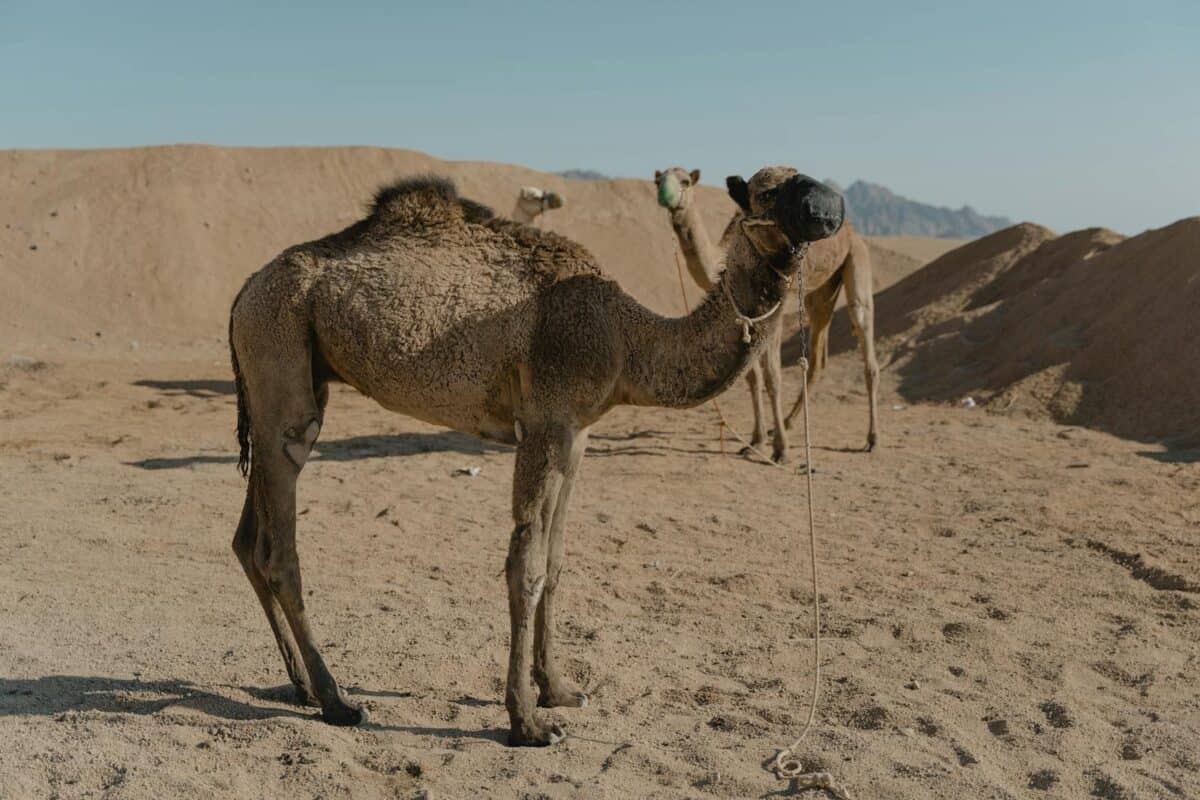In the vast, unforgiving expanses of the world’s deserts, camels navigate the harsh landscape with ease. These remarkable creatures have fascinated scientists and adventurers alike with their ability to withstand scorching temperatures that reach beyond 100°F, all without breaking a sweat. But what is the secret behind this extraordinary resilience? Join us as we embark on a journey to uncover the intricacies of camel physiology and behavior that make them the unrivaled masters of desert survival.
Camels: The Iconic Desert Dwellers

Camels, often dubbed the “ships of the desert,” have evolved over millions of years to thrive in arid environments. With their distinct humps and long necks, they are unmistakably built for endurance under extreme conditions. These physical adaptations are not merely for show; they play crucial roles in helping camels conserve water and manage heat efficiently.
The Art of Water Conservation

Unlike humans, who rely on sweating to cool down, camels have mastered the art of minimizing water loss. This starts with their ability to tolerate significant dehydration. Camels can lose up to 25-30% of their body weight in water while maintaining their physical and cognitive functions, a feat that would be fatal for most other animals.
Thermal Regulation in Camel Physiology

Camels are equipped with a sophisticated thermoregulation system. They can withstand body temperatures that fluctuate over a wide range, typically between 93°F at night to as high as 106°F during the day. This flexibility helps reduce the need for sweating, conserving precious water in the process.
The Role of Fat-Filled Humps

Contrary to popular belief, camel humps are not reservoirs of water but fat. This stored fat acts as both a food reserve and an insulator. By concentrating fat to one part of their body, camels minimize heat absorption from the sun and thus lower their overall heat load.
Efficient Nasal Structure

Camels have developed an ingenious way to minimize water loss through breathing. Their large, complex nostrils are capable of trapping moisture from exhaled air, which is then reabsorbed into the body. This adaptation is critical in preserving water, especially during prolonged periods without access to liquid resources.
Thick Coats: A Double-Edged Sword

At first glance, a camel’s thick coat might seem counterproductive in hot climates. However, this dense covering provides insulation against the sun’s rays. It helps in maintaining a stable body temperature and prevents overheating, allowing camels to remain active even during the hottest parts of the day.
Survival Strategy: Reduced Activity

Behaviorally, camels have adapted to high temperatures by adjusting their daily routines. They prefer to rest during the intense midday heat and become more active in the cooler mornings and evenings. This strategic activity pattern helps them conserve energy and water.
Drinking Habits: Maximizing Efficiency

When water is available, camels exhibit remarkable drinking capacities. They can drink up to 40 gallons of water in one go, rehydrating rapidly without suffering from water intoxication. This allows them to go days, or even weeks, without drinking again, surviving solely on their reserves.
Ion Regulation: A Cellular Marvel

The blood of camels contains unique proteins that make their red blood cells more elastic and capable of enduring extreme dehydration. Moreover, camels have a high concentration of ions like sodium that helps regulate body fluids, maintaining physiological balance amidst dehydration.
Adapting to Nutrient-Poor Diets

Surviving in deserts is not just about water; it’s also about food scarcity. Camels have adapted by having a flexible diet, capable of consuming dry and thorny desert vegetation. Their highly specialized digestive system extracts maximum nutrients and moisture from the minimal food they consume.
The Impact of Climate and Geography

Prevailing environmental conditions have continuously shaped camel physiology. The challenges of different desert ecosystems—be it the sand dunes of the Sahara or the rocky terrains of the Arabian Peninsula—have influenced these creatures to fine-tune their adaptations for survival.
The Camel’s Role in Human Survival

While camels are incredible survivors in their own right, their synergy with humans has been equally vital throughout history. They have served as reliable transportation, sources of nourishment, and symbols of cultural significance, illustrating the profound interdependence between humans and camels in desert regions.
In summary, camels are exemplary models of evolutionary resilience. Their ability to survive 100°F heat without sweating is a testament to a combination of physical adaptations and strategic behaviors, finely honed by the relentless forces of nature. As we continue to study these remarkable creatures, they offer invaluable insights into biological ingenuity and survival, inspiring admiration and respect across the globe.
- This Bird Sets Forests on Fire - August 17, 2025
- Orcas Have Regional Accents - August 17, 2025
- The Largest Group Migration in the Animal World - August 17, 2025

